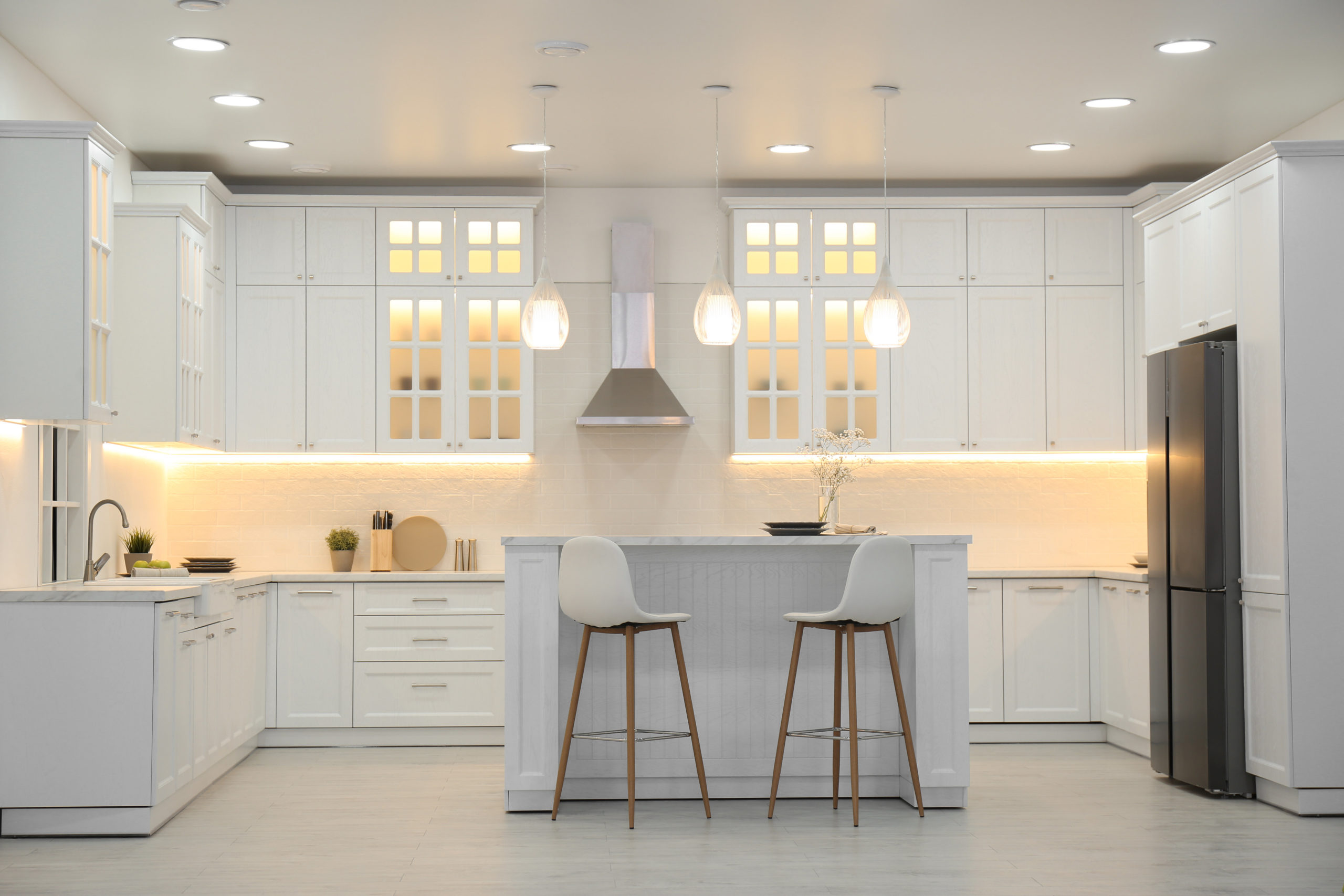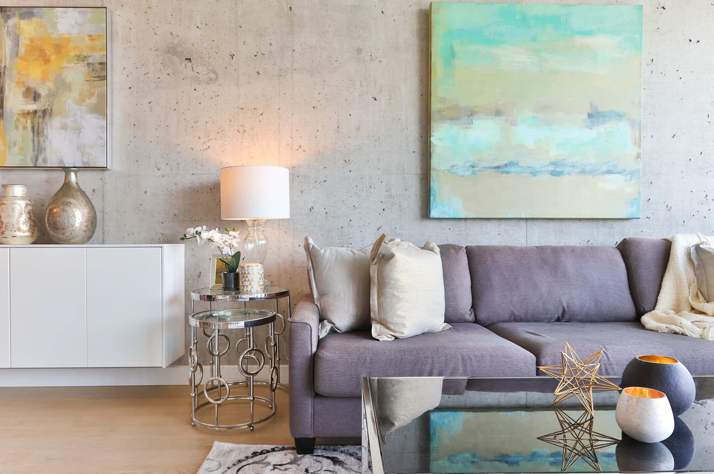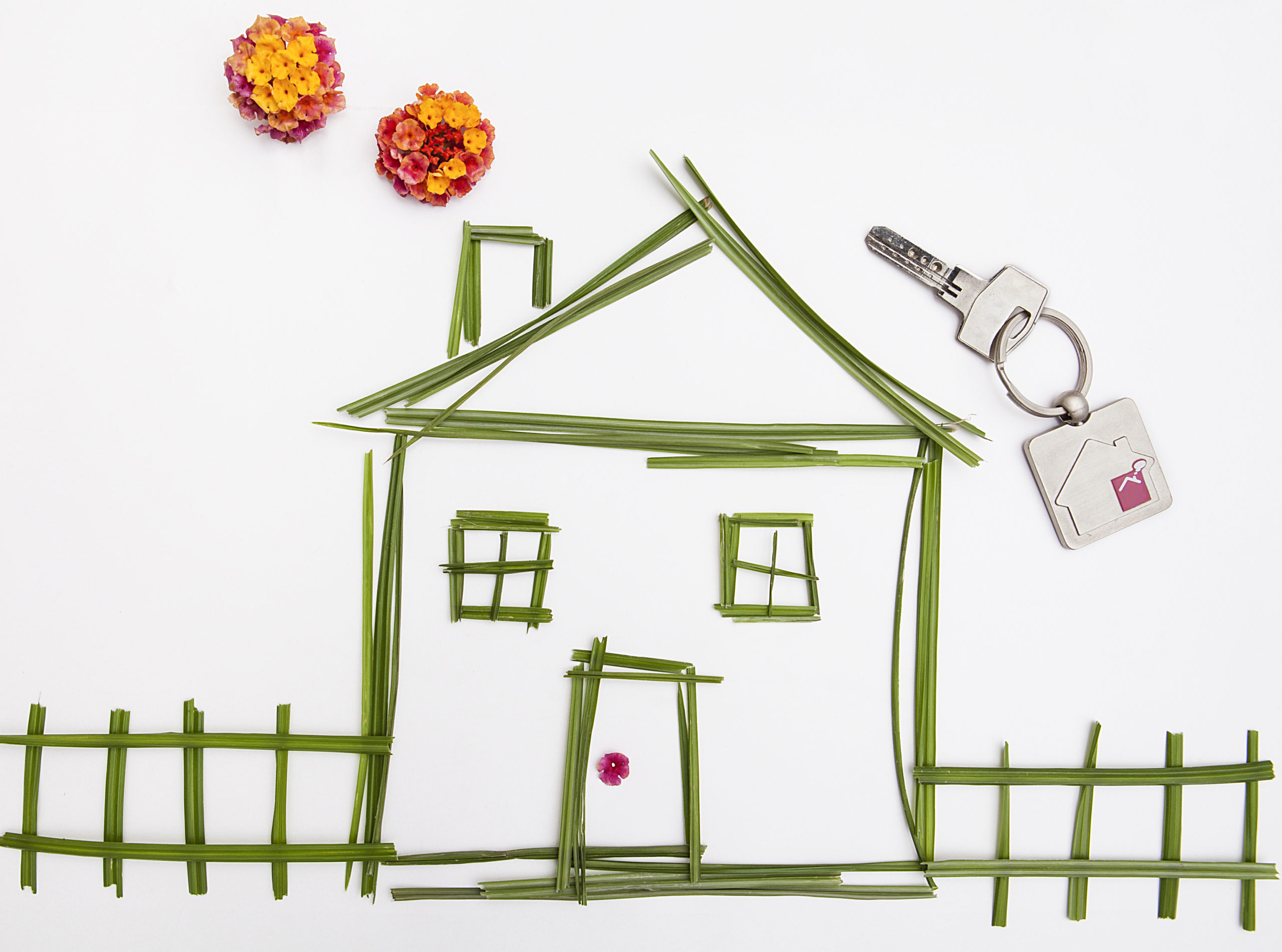Blog
- Details
- Hits: 439
How to Design a Kitchen You Love Being In

There’s a reason kitchens are the beating heart of homes! They are one of the most social spaces where you spend the majority of your time – whether you’re cooking, cleaning, entertaining, or making countless cups of tea.
A kitchen is also considered one of the biggest selling points of a house, so it’s important to get the design right. A well-designed kitchen will be more enjoyable for you, your family and future buyers!
If you’re renovating your kitchen, here’s how to design a kitchen you love being in.
1. Create a Wishlist
The first step to designing your dream kitchen is to create a wishlist. Write down all your wants and desires for your brand-new cooking space. Think about things like your ideal appliances, lighting, cupboard designs and colour schemes.
2. Set a Budget
Before you undertake any home renovation project, it’s always a good idea to set your budget. Now you know what’s on your wishlist, it’s time to decide how much you’re willing to spend on your dream kitchen.
Think about things like how long you’ll get to enjoy your new kitchen and what the resale potential is. Consider whether it’ll be worth the investment in terms of added value to your property – taking into account how long it’ll be until you sell! If you’ll be moving in the next one or two years, you may decide to set a lower budget than if you’re staying another 10+ years.
3. Prioritise
It’s always good to have a wishlist. But now you know your budget, it’s time to prioritise. Split up your wishlist into two columns – a priority column and a ‘nice-to-have’ column – and organise your dreams accordingly.
This practice will help you decide what you truly want and what you’re willing to sacrifice if it’s not within your budget.
4. Measure Up
To help you refine your priorities even further, it’s time to measure your space. When you know how much space you’re working with, you can start researching how big things in your kitchen need to be. For example, what’s the perfect island size? How big is the traditional range cooker you want to have?
If you find it easier, ask an expert to measure your space for you to let you know what is and isn’t possible.
5. Visualise
The next step in designing your dream kitchen is to visualise! Draw up your design ideas on paper or use an online tool to create a virtual plan. When you have a few designs you like, take it one step further and draw them to scale using masking tape in your garden or living room.
Consider things like:
- How much space you’ll have to prepare and serve dinner
- How many people can fit in the kitchen
- Whether the worktop space is large enough for all of your appliances
By seeing your design to scale, you’ll have a better idea about whether the new design is right for you.
Selling Up?
If you’re renovating your home in preparation for a sale, we’d love to talk! Our friendly team are experts in valuing homes in the area, and we can offer advice on what renovations add the most value.
Call us today for a chat or email us at This email address is being protected from spambots. You need JavaScript enabled to view it..
- Details
- Hits: 510
How to Get Your Property Photo Ready

Photographs are an essential step when selling your home and are integral to an effective marketing strategy.
Your photos need to look fantastic and stand out in a busy market. The images need to be an accurate and honest representation of the property, which is why staging your home before the professional photographer arrives is crucial.
If you are not hiring professional home stagers, there are some simple steps you can take to prepare your home in the best possible way before we send our professional photographers out to capture your home at its best!
Pay Attention to the Front of The Property
Even the nicest of cars cause distraction. Remove your vehicle from the driveway to give the viewers the full impact of the outside space and an unobstructed view of the front of the property. Additionally, ensure garage doors are closed. Small changes will make a significant impact on the overall quality of the photography.
If you usually keep the bins at the front of the property, ensure they are hidden away out of any shots. Thoroughly clean windows and windowsills to provide that the all-important front image of the home is immaculate.
Take some time to tidy the front garden, giving the best first impression. Mow the lawn, trim back any hedges and remove any empty plant pots that may be lying around.
Make Your Gardens Attractive
Gardens are often a huge draw for potential buyers, both those who are breaking free from the rental market and those climbing up the property ladder. Gardens are subject to personal taste, but neat lawns, clean decking, smart patios and clearly defined eating areas are what buyers want, so take time to prepare them before the arrival of your photographer.
Showcase Your Bedrooms
Remove any signs that may be stuck on bedroom doors, especially common for children’s rooms. Store away any children’s toys which may eliminate part of your target audience. If you don’t have the storage room, hide them in the car while the photographer is working!
Make all the beds and plump up the pillows. If any cushions are looking past their best, hide them out of shot. Items like this can do more harm than good and make the whole room look tired.
Add Sparkle to Your Bathroom
Bathrooms and kitchens are the main rooms that can really draw viewers to a home. Simple hacks in the bathroom can drastically elevate your photographs. Simply make sure the toilet seats are down, and mirrors are sparkly clean with no watermarks or smudges.
As bathrooms are often small, create space by being as minimal as possible. Store away cosmetic items such as shampoo, lotions, or razors. The bright colours of the bottles can be unattractive and distracting when photographed.
Remove Kitchen Clutter
Kitchens are the heart of the home, and a beautiful kitchen is often the factor that convinces unsure potential buyers. Clear all surfaces, leaving minimal appliances in view. This will prevent clutter from causing distraction and give the illusion of a bigger and fresher space with plenty of work surfaces.
Don’t Distract with Electronics
Turn off the TV and any computers and make sure there are no loose electronic devices left on countertops, which are distracting for people viewing the images. The last thing you want to see are beautiful images of your home with a distracting TV show in the corner of the otherwise perfect image.
Let in The Light
Open curtains and blinds wide to let the natural light flow through the home. Your photographer will then be able to manipulate the light to show your home in the best, most natural way possible. If you have blinds, open them tilted upwards. This will push the natural light towards the ceiling, allowing it to illuminate without being too harsh for photography.
Give Your Pets a Day Out!
Although you love them, it is best to keep pets out of your listing photographs whether it is a cat, dog or hamster, if possible, remove the pet from the home for the whole day, as this will give you an excellent opportunity to clean, ready for staging, and prevent them from getting in the way of the photographer.
In addition to the pet itself, make sure any pet toys, food bowls and beds are out of shot. Furthermore, tidy up the garden, ensuring no waste or pet toys are lying around.
Call the friendly team at Warren Powell-Richards now – we use professional photography as standard!
- Details
- Hits: 471
Is it Legal to Sell a House With Asbestos in the UK?

50%[1] of properties in the UK built before 1999 are estimated to have asbestos, and it’s not uncommon to discover that your home contains hazardous material so it’s crucial you know the facts.
Selling a home that contains asbestos is legal, but there are some rules you need to follow – particularly if you are aware that your home contains the product or if you know it’s damaged and causing a risk to the health of anyone that purchases your home.
If your home contains asbestos and you are wondering what you need to consider when selling it, here’s an overview of how to sell a home with asbestos in the UK and what legal requirements you need to bear in mind.
Do I Have to Disclose Asbestos to Buyers?
Yes, in the UK you have to disclose asbestos to buyers if you know about it. This is particularly important if you know the asbestos is disturbed or damaged and presents an issue to the health of anyone that purchases your property.
How Do I Know if I Have Asbestos in My Home?
Asbestos was officially banned in the UK in 1999, but usage of the product in the construction of residential properties started to decline around the 1980s. If your home was built before the ban, particularly during the 60s or 70s, it could contain asbestos somewhere.
However, the product is hard to identify, particularly since it can be hidden. There are two things you can do to identify whether your home has asbestos.
- Arrange a survey from a chartered surveyor
- Get a laboratory test done on the suspected areas
Usually, it’s not necessary to get a test done unless you need to remove asbestos during a home renovation project. Simply having a surveyor inspect the property can be enough to determine whether your home potentially contains asbestos or not.
Can Asbestos Impact a Sale?
Generally, having asbestos in your home won’t impact the sale. However, there are some exceptions. Asbestos becomes dangerous when it’s damaged.
If the asbestos in your home is damaged and provides a threat to people’s health when living in the property, it can put buyers off and lower the amount of interest you get in your property. Plus, since any buyer will have to pay to fix the asbestos issues, it can also negatively impact the value your property is priced at.
Get a Valuation
Asbestos doesn’t have to cause an issue when selling your home. It all depends on where it is and what condition the asbestos is in.
If you need advice from an expert about selling your home with asbestos, Warren Powell-Richards are your local property experts. We are happy to arrange a valuation of your home and offer advice around how to sell a home with asbestos.
Give us a call today to book a valuation with our friendly team or send us an email at This email address is being protected from spambots. You need JavaScript enabled to view it. to arrange a call back.
[1] https://www.armco.org.uk/asbestos-survey-news/when-was-asbestos-banned-in-uk/
- Details
- Hits: 377
7 Tips for Making the Most of Your Living Space

When it comes to your home space, there will no doubt be times when you wish there was a bit more of it. If things are feeling a bit cramped, then you may be tempted to take a page out of Marie Kondo’s book and start throwing things out. However, there are ways to use your living space that allow you to keep your personal things while still making the most of the space you have.
Here are a few things to try in your home.
Choose the Right Furniture – And Use Multifunctional Pieces
Furniture that’s too large for a space will soon dominate it and make the room feel smaller by comparison. Switching to slightly smaller sizes, for example, from a king to a double bed, may only give you a few extra inches, but the room will immediately feel bigger. Swap large bookshelves for fitted shelves and consider using clothes rails instead of wardrobes for a contemporary look. Stools can also work well in the living room, instead of oversized armchairs. Another thing to look out for is multifunctional furniture that can be used for more than one purpose. For instance, sofas that fold into beds, or coffee tables that can be raised and used for dining. This will mean you have less furniture in each room.
Think Vertically
If you want a room to look bigger, you need to draw the eye upwards and avoid using furniture that takes up too much floor space. Choose long, thin bookcases or build shelves close to the ceiling to make your room feel bigger and brighter. Get rid of bulky TV units and mount your television on the wall; as long as the wires are well hidden, it’ll look so much better. Also, avoid any pieces of furniture that are short and horizontal, like cabinets. Another bold move is to use vertical stripes to instantly make it look like you have those covetable high ceilings. Just a subtle stripe in neutrally coloured wallpaper can make a big difference.
Plan Your Layout Carefully
Draw a rough sketch of your room’s shape and then plan where you’ll put the furniture to maximise space. It can be easier to plan on paper than it is to spend hours moving things around. If you’re buying new furniture, look for pieces that complement the space nicely and work with the flow.
Keep It Light
If a room is already small, the worst thing you can do is block out the natural light with a set of dark curtains. Stick to blinds, which will leave your windowsill free for a few photos for a contemporary look. If you absolutely must have curtains and hate living without them, then choose a neutral colour and have them properly fitted, so they don’t trail on the ground.
Keep It Neutral, but with Statement Pieces
It’s important not to make your room too beige when you’re trying to make the space look bigger. If it looks too cold and sterile, then it’s simply not going to be an enjoyable space. Instead, you should opt for neutral tones, with lots of textures for a luxe feel, then add a couple of statement pieces that focus the eye. For example, a bright accent chair or unique lamp are things that people will see right away, so they won’t be thinking about the size of the room.
Use Lighting Properly
Different types of lighting can be used to draw attention to focal points in a room. Overall, your space needs to be well-lit; otherwise, it’s going to feel claustrophobic. You can then use pieces such as pendant lights over a living area or dining table to mark the different sections of a room. In a small space, stick to wall-mounted lighting where possible, avoiding oversized floor or table lamps.
Add Some Unique Touches
Without a few personal objects on display, your living space will look too much like a show home, and it won’t feel cosy. In small spaces, a few objects on a shelf can brighten up the room and draw attention from its size. Whether it’s family photos or unusual items you picked up while travelling, don’t be afraid to make the space your own.
Whatever the size of your home, you’ll want to make the most out of your living space. A few changes to the design or layout can make a big difference, creating the feel of more space and giving you a place that feels homely.
For expert buying and selling property advice, contact our team of professionals at Warren Powell-Richards or call into our office.
- Details
- Hits: 399
What Is the Difference Between Tenants in Common and Joint Tenants?

It’s Important Not To Overlook The Sometimes Dull But Essential Details That Go With Purchasing A Property
If you’re buying a home with your partner or a friend, you may be very excited about the process. But it’s important not to overlook all the dull but essential details that go with it.
Joint ownership brings legal implications along with it that you should address straight away, and one key question is whether you’ll be holding your property as “Joint Tenants” or “Tenants in Common”. At Warren Powell-Richards, we’ve realised that many prospective buyers have no idea what the differences are between these two terms! So, here is an overview of everything you need to know.
What Does “Joint Tenants” Mean?
If you are “joint tenants”, you each have an equal right to the entire property. As many as four owners can hold joint tenancy of a property, but it does raise some potential legal issues. Legally, you’re deemed to be a single individual, so you need just one mortgage, and when you want to sell the property, it must be a joint decision.
If one joint tenant passes away, the other joint owners are automatically left the property under a rule called “Right of Survivorship”. Since you can’t pass on the property in a will as a joint tenant, that’s a major consideration to keep in mind when choosing how you’ll hold the property.
What Does “Tenants in Common” Mean?
If you hold the property as “tenants in common”, each party will own their own separate share, which may differ in terms of size. So, as an example, one party may own 20%, one may own 30%, and one may own 50%.
When you sell the property, all parties must agree, but if you’re “tenants in common”, you can leave your share of the property to somebody other than your co-buyers in your will. Although legally speaking you can technically each have your own mortgage for your share of the property, few lenders offer these mortgages.
An Overview of The Similarities and Differences Between Tenants in Common and Joint Tenants
Agreement to Sell – Both joint tenants and tenants in common must agree with each other when it comes to selling the property.
Ownership Division – Joint tenants have an equal right to the entire property while tenants in common hold their own share.
Bequeathing the Property in a Will – Joint tenants cannot pass on the property in their will; their share passes automatically to the other joint owners, while tenants in common can pass their share to anyone they choose.
Joint Mortgages – joint tenants must have a joint mortgage for the property. Although tenants in common are not legally required to do so, they may find it difficult to find a lender who is prepared to split up the mortgage between tenants.
Is It Best to Be Joint Tenants or Tenants in Common?
You need to decide whether tenancy in common or a joint tenancy is best for your individual circumstances. In general, couples who are buying a home together find that holding the property as joint tenants is the best option for them, while people who are buying with friends or as part of a group of buyers usually find that a tenancy in common is the right choice for them.
If you’re ready to buy a property with your partner or friends, send us an email at This email address is being protected from spambots. You need JavaScript enabled to view it. or give us a call now. Our friendly team at Warren Powell-Richards are looking forward to helping you find the right home for you.





ALTON | FARNHAM | GODALMING | GRAYSHOTT | HASLEMERE